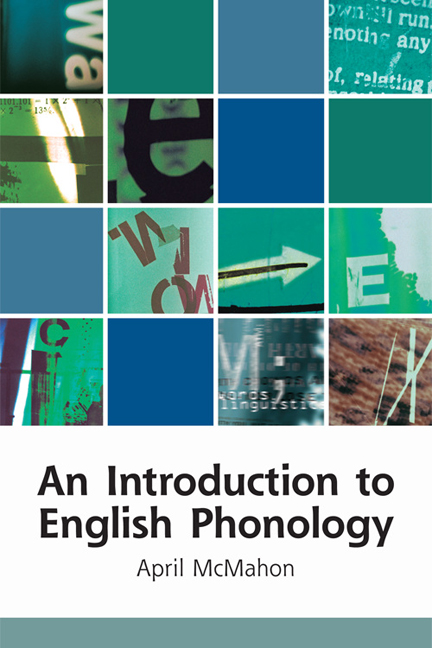Book contents
- Frontmatter
- Contents
- To colleagues
- 1 Sounds, spellings and symbols
- 2 The phoneme: the same but different
- 3 Describing English consonants
- 4 Defining distributions: consonant allophones
- 5 Criteria for contrast: the phoneme system
- 6 Describing vowels
- 7 Vowel phonemes
- 8 Variation between accents
- 9 Syllables
- 10 The word and above
- Discussion of the exercises
- References
- Index
- Frontmatter
- Contents
- To colleagues
- 1 Sounds, spellings and symbols
- 2 The phoneme: the same but different
- 3 Describing English consonants
- 4 Defining distributions: consonant allophones
- 5 Criteria for contrast: the phoneme system
- 6 Describing vowels
- 7 Vowel phonemes
- 8 Variation between accents
- 9 Syllables
- 10 The word and above
- Discussion of the exercises
- References
- Index
Summary
This textbook is designed for use on ten- or twelve-week introductory courses on English phonology of the sort taught in the first year of many English Language and Linguistics degrees, in British and American universities. Students on such courses can struggle with phonetics and phonology; it is sometimes difficult to see past the new symbols and terminology, and the apparent assumption that we can immediately become consciously aware of movements of the vocal organs which we have been making almost automatically for the last eighteen or more years. This book attempts to show students why we need to know about phonetics and phonology, if we are interested in language and our knowledge of it, as well as introducing the main units and concepts we require to describe speech sounds accurately.
The structure of the book is slightly unusual: most textbooks for beginning students, even if they focus on English, tend to begin with an outline of elementary universal phonetics, and introduce phonological concepts later. I have started the other way round: in a book which is primarily intended as an introduction to phonology, it seems appropriate to begin with one of the major units of phonology, the phoneme. The idea of phonological contrast is a complex but necessary one, and students do seem, at least in my experience, to cope well with an introduction of this more abstract idea before they become embroiled in the details of phonetic consonant and vowel classification. When it comes to presenting those details, I have also chosen to use verbal descriptions rather than diagrams and pictures in most cases. There are two reasons for this. First, students need to learn to use their own intuitions, and this is helped by encouraging them to introspect and think about their own vocal organs, rather than seeing disembodied pictures of structures which don't seem to belong to them at all. Secondly, I know from meeting fellow-sufferers that I am not the only person to find supposedly helpful cartoons and diagrams almost impossible to decipher, and to feel that the right word can be worth a thousand pictures. If students or teachers feel the visual centres of their brains are being insufficiently stimulated, many diagrams and photographs are available in the additional reading recommended at the end of each chapter.
- Type
- Chapter
- Information
- An Introduction to English Phonology , pp. ix - xPublisher: Edinburgh University PressPrint publication year: 2016



